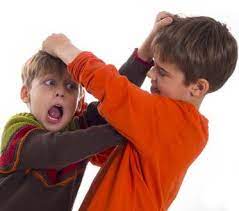How to Raise Nonviolent Kids in a Violent World

“There comes a point where we need to stop just pulling people out of the river. We need to go upstream and find out why they’re falling in.”
― Desmond Tutu
The Problems:
There has been an increasing prevalence of young child daycare (babyhood and toddler years) violence, school-aged student violence, and adult violence in recent years.
Violence is behavior involving physical force intended to hurt, damage, or kill someone or something.
The Dynamics:
Childhood behavior is either learned or allowed.
1. A hurt child is likely to hurt others especially when threatened with violence. Abuse or minor everyday hurts and frustrations can lead to violent episodes.
2. We must teach children that when they are hurt or upset that its ok to release the emotions about what has happened. Toddlers must be allowed to cry if they are hurt, hit, abused, frustrated, frightened, over-stimulated, or punished. The repression of these feelings for fear of punishment or negative evaluation, build up like a time bomb. When the child explodes, it is often unleashed on self or others.
What Parents Can Do:
- Model Appropriate Methods to deal with Conflict.
- Explain the natural occurring tendency for the desire for revenge and how it makes matters worse. (Get someone back, teach them a lesson, or to get even)
- Limit Screen Time.
- Teach Anger Management. (Use role play)
- Be Respectful of Differences. (Start with how we are similar and move to the gifts of our differences)
- Ensure a Safe, Secure and Happy Environment.
- Learn to Facilitate tantrums and meltdowns. (Provide a safe and supportive place for release and resolution)
- Don’t steal your child’s hard. (Is your goal to rear a strong child or a safe child?)
- Call to action against TV, movie, music, and video game violence



